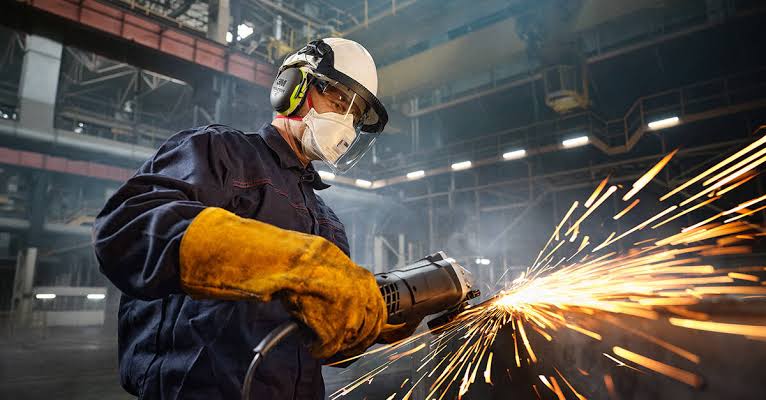Thinking about adding a skid steer to your construction equipment fleet? These compact powerhouses have revolutionized the way we handle materials, excavate, and manage construction sites.
Let’s explore everything you need to know about skid steers and how to make the right purchase decision for your needs.
What Is a Skid Steer?
A skid steer is a small, versatile construction machine with lift arms that can connect to many different tools. It gets its name from the way it turns – by slowing or stopping wheels on one side while the other side continues moving. This causes the machine to “skid” around corners.
These machines have become essential on construction sites because they can do so many different jobs. According to the Construction Equipment Guide, over 80% of construction sites in North America use at least one skid steer for daily operations.

Why Skid Steers Are Construction Site Heroes
Skid steers shine in construction for several important reasons:
- Versatility: With the right attachments, one skid steer can replace many different machines. It can dig, lift, push, grade, and more.
- Compact Size: These machines can work in tight spaces where larger equipment can’t fit. They’re perfect for indoor renovation projects or crowded urban construction sites.
- Easy Transport: You can move skid steers between job sites on a standard trailer without special permits.
- Simple Controls: Most operators can learn to use a skid steer quickly compared to more complex equipment.
Popular Skid Steer Attachments
The real magic of skid steers comes from their ability to use different attachments:
- Buckets (for scooping and moving materials)
- Augers (for drilling holes)
- Backhoes (for digging)
- Brooms (for cleanup)
- Forks (for lifting pallets)
- Trenchers (for digging trenches)
- Snow blowers and plows
- Concrete mixers
How to Choose the Right Skid Steer
When looking at skid steer for sale denver, follow these steps to make a smart choice:
Step 1: Understand Operating Capacity
Operating capacity tells you how much weight the machine can safely lift. Skid steers typically come in these size ranges:
- Small: 1,300-1,750 pounds capacity
- Medium: 1,750-2,200 pounds capacity
- Large: Over 2,200 pounds capacity
Experts from Caterpillar recommend choosing a machine with at least 15% more capacity than your heaviest regular load for safety and efficiency.
Step 2: Consider Your Space Limitations
Measure the narrowest spots where you’ll need to operate. Standard skid steer widths range from about 3-6 feet. If you work in very tight spaces, you might need a narrow model.
Step 3: Evaluate Lift Type Options
There are two main lift designs:
- Radial Lift: The arms pivot from a single point, creating an arc. These are better for digging and working at mid-range heights.
- Vertical Lift: The arms move up and down while staying mostly parallel to the machine. These are better for lifting to greater heights and loading trucks.
Step 4: Choose Between Wheels and Tracks
- Wheeled Models: Less expensive, faster, and better on hard surfaces like concrete.
- Tracked Models: More expensive but provide better traction on soft ground like mud, sand, or snow. They also distribute weight better to avoid damaging surfaces.
Step 5: Check the Hydraulic Flow Rate
If you plan to use hydraulic attachments like augers or trenchers, pay attention to the hydraulic flow rate (measured in gallons per minute). More demanding attachments need higher flow rates.
Step 6: New or Used?
A new skid steer will cost between $25,000 and $65,000 depending on size and features. Used models can save you money, but be sure to:
- Check the hour meter (similar to mileage on a car)
- Look for leaks around hydraulic components
- Test all functions
- Ask about maintenance history
Maintenance Basics: Keeping Your Skid Steer in Top Shape
Taking good care of your skid steer isn’t just about preventing breakdowns. Good maintenance saves you money and keeps your machine working efficiently for years. Let’s look at what you need to do to keep your skid steer in great condition:
Follow the Manufacturer’s Service Schedule
Every skid steer comes with a maintenance schedule in the owner’s manual. This schedule tells you exactly when to perform important services:
- Change engine oil and filters every 250-500 hours
- Replace hydraulic filters every 500 hours
- Check and adjust track tension (for tracked models) every 50 hours
- Inspect the drive chain and sprockets every 250 hours
Experts point out that following the recommended service schedule can extend a skid steer’s lifespan by up to 30% compared to machines that only receive repairs when something breaks.
Check Fluid Levels Daily
Before starting work each day, take five minutes to check these important fluids:
- Engine oil
- Hydraulic fluid
- Coolant
- Fuel level
- DEF (Diesel Exhaust Fluid) for newer models
Low fluid levels can cause serious damage if not caught early. For example, running low on hydraulic fluid can burn out your pump, which could cost over $2,000 to replace.
Grease Moving Parts Regularly
Skid steers have many pivot points that need regular greasing:
- Lift arm pivots
- Cylinder ends
- Control linkages
- Attachment mounting plates
Most manufacturers recommend greasing these points every 10-50 operating hours depending on working conditions. In dusty or muddy environments, grease more frequently. Use a high-quality grease that matches the manufacturer’s specifications.
Keep Radiators and Coolers Clean
Skid steers work hard and generate a lot of heat. To prevent overheating:
- Check radiator and oil cooler fins daily for dirt and debris
- Use compressed air (at low pressure) to blow out dust and dirt
- Avoid using pressure washers directly on cooling fins, as they can bend
- In dusty conditions, clean more frequently – sometimes multiple times per day
A clogged radiator can cause engine temperatures to rise by more than 50 degrees, potentially leading to engine damage.
Replace Air Filters As Recommended
Air filters protect your engine from dust and debris:
- Check the air filter indicator daily
- Replace filters when the indicator shows it’s needed, not just on a schedule
- Inspect for damage when replacing
- Never run the engine without an air filter installed
Even small amounts of dust entering your engine can act like sandpaper on internal components. According to Researchgate, dirty air filters can reduce engine power by up to 20% and increase fuel consumption by 10%.
Additional Maintenance Tips
- Keep the battery terminals clean and tight
- Check tire pressure weekly on wheeled models
- Inspect for loose bolts and fittings after heavy use
- Clean the cab and controls to prevent buildup of dirt that could affect operation
- Store your skid steer in a dry place when not in use
- Consider oil analysis to catch internal problems early
Safety First: Protecting Yourself and Others
Skid steers are involved in hundreds of accidents each year, many of which could be prevented with proper safety practices. Here’s how to stay safe:
Wear a Seatbelt at All Times
The seatbelt is your first line of defense if the machine tips over:
- Adjust it for a snug but comfortable fit
- Replace damaged seatbelts immediately
- Never operate without buckling up, even for “quick” jobs
- Make sure the seatbelt retracts and latches properly
Keep the Safety Bar or Restraint in Place
The safety bar or restraint serves multiple purposes:
- It keeps you in the seat during rough operation
- Many models tie this to the hydraulic system as a safety interlock
- It prevents accidental contact with controls
- It serves as a reminder to operate safely
Never tie down or bypass this critical safety feature.
Look Around Before Moving
Skid steers have blind spots, especially to the sides and rear:
- Do a complete walkaround before starting
- Check for people, obstacles, and uneven ground
- Use a spotter when working in crowded areas
- Look in the direction of travel
- Use mirrors (if equipped) but don’t rely on them exclusively
Take extra caution when backing up – this is when most collision accidents happen.
Keep Loads Low When Traveling
High loads affect stability in several ways:
- They raise the machine’s center of gravity
- They can obstruct your vision
- They increase the risk of tipping on uneven ground
- They make stopping more difficult
Keep the bucket or attachment 6-12 inches off the ground when traveling – high enough to clear obstacles but low enough for stability.
Never Modify Safety Features
Modern skid steers have multiple safety systems:
- Operator presence systems that prevent operation when you’re not properly seated
- Backup alarms
- Rollover protection structures (ROPS)
- Falling object protective structures (FOPS)
- Safety interlocks on hydraulic systems
Modifying or bypassing any safety feature puts you and others at serious risk. According to the Construction Safety Council, disabled safety features contribute to over 40% of serious skid steer accidents.
Additional Safety Practices
- Never carry passengers on the machine or in attachments
- Enter and exit the cab only when the engine is off and attachments are lowered
- Keep bystanders at a safe distance when operating
- Be aware of power lines and other overhead hazards
- Understand the machine’s tipping limits and load capacity
- Use three points of contact when entering or exiting (two hands and one foot, or two feet and one hand)
- Always lower attachments to the ground when parking
Maximizing Your Skid Steer Investment
To get the most value from your skid steer:
Consider Rental vs. Ownership
If you need a skid steer for less than 60-70 days per year, renting might be more economical. The break-even point varies based on rental rates in your area and the specific model.
Track Operating Costs
Keep records of:
- Fuel consumption
- Maintenance expenses
- Repair costs
- Downtime
- Hours operated
This data helps you determine when it’s time to replace your machine and budget for future equipment needs.
Train Operators Properly
Even experienced operators benefit from model-specific training:
- Proper operation extends equipment life
- Efficient techniques save fuel
- Understanding limitations prevents damage
- Knowledge of all controls improves productivity
Many dealers offer operator training as part of the purchase package.
Consider Resale Value
Some brands and models hold their value better than others. Factors that affect resale value include:
- Brand reputation
- Local dealer support
- Availability of parts
- Machine condition
- Documentation of maintenance
Keeping detailed maintenance records can increase resale value by 10-15%.
By following these expanded maintenance and safety guidelines, you’ll not only keep your skid steer running efficiently but also protect your investment and ensure a safe working environment. Remember that the time spent on proper maintenance and safety practices pays dividends through increased productivity, reduced downtime, and fewer accidents.
The Bottom Line
A skid steer is one of the most useful pieces of equipment you can add to your construction operation. By understanding your specific needs and the options available, you can choose a machine that will boost your productivity for years to come.
Whether you’re building homes, landscaping, or handling materials in a warehouse, the right skid steer will quickly become the hardest working member of your equipment team.



